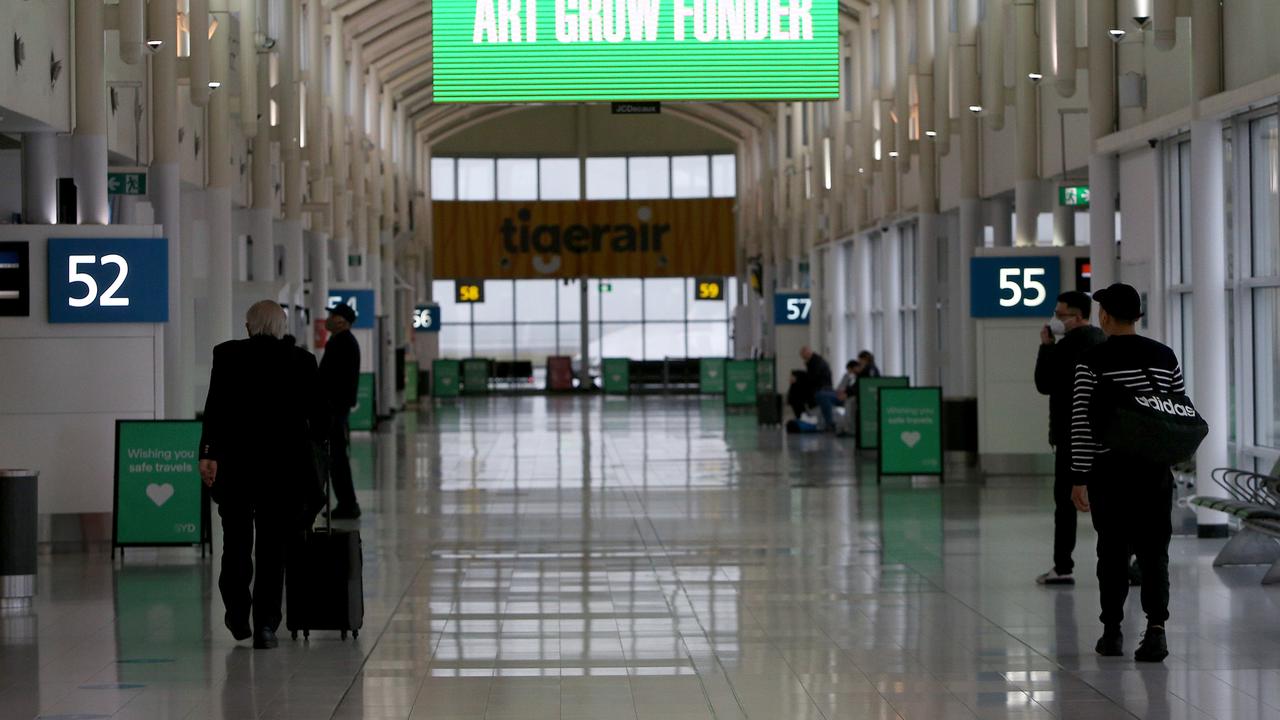Keep Hazelwood power station open through takeover
THE State Government must take over the Hazelwood power station and keep it operating, writes Terry McCrann.

Terry McCrann
Don't miss out on the headlines from Terry McCrann. Followed categories will be added to My News.
THE State Government must take over the Hazelwood power station and keep it operating.
That is quite simply the only way we are going to keep the lights on not just in Victoria but also South Australia — and indeed, if we get another hot day in New South Wales, in that state as well.
If we get a hot day, simultaneously right across all the southern states in a year or so’s time — gee, even without “global warming”, I wonder how likely that is, just as a consequence of, you know, that thing that used to be called “summer” and is now called “climate change” in assorted padded cells? — the lights (and air conditioners) will very probably go off in all three states simultaneously.
As there is zero chance of the Andrews Labor Government doing what I suggest, might I personally extend an, ahem, warm welcome to the 19th century to 15 million Victorians, South Australians and New South Welshmen, non-gender specific.
And don’t worry, you 5 million Queenslanders, you won’t be much later in getting back to the warm embrace of the 19th century if your Labor government gets its way on scrapping cheap, plentiful and reliable coal-fired power as well.
All 20 million — indeed all 24 million Australians — will still be able to watch hundreds of millions of tonnes of our coal heading off to China to keep its lights (and air conditioners) on, as 1400 million Chinese settle into the 21st century we’ve left.
They say, elections have consequences. South Australians are finding out the “consequences” of electing Jay Weather-dill as premier.
Some time next summer, Victorians are likely to discover the same “consequences” of electing Daniel “birdkiller” Andrews as premier.
Now, in a rational world, in a state and a country that had not lost all touch with reality, a power station so fundamental to the provision of electricity across three states, would not be about to abruptly close on the decision of a board of directors in a country a long, long way away.
The decision was not exactly surprising. Governments both state and federal, both Labor and Coalition, have hung the “not wanted” sign on Hazelwood. And its owner is not one to take much persuading.
The majority owner is French company Engie which sits at the very centre of Global Warming Hysteria Central, that is to say the European Union.
It is walking away from Hazelwood but is budgeting to spend up to $1 billion on remediation of it and its coal sources.
The state government — sorry, a rational state government — would negotiate a deal whereby it got the power station and an appropriate cheque from Engie (and its minority partner Mitsubishi). It would keep the station operating and take responsibility for remediation on its eventual closure.
The logic on this is unassailable even if you believe CO2 is actually worse than Hitler — the usual reference point for loons. After all, CO2 is going to destroy the entire planet — Hitler never got to threaten quite that.
I exaggerate? Let me merely reference a headline in the Sunday Age of February 5: that Donald Trump’s views on climate change “threaten the entire planet”. And that’s just his views.
Well, OK, so maybe it should be CO2 plus Trump are worse than Hitler. Even if you believe that, keeping Hazelwood open as an interim measure is not going to make the slightest difference to climate change outcomes.
The entire Australian coal-fired power generation makes not the slightest difference.
But triggering a real power crisis by closing Hazelwood would work to destroy any prospect of further reductions in coal-fired power.
ON the opposite side, if you would prefer to continue living in the 21st century, keeping Hazelwood open and the lights (and air conditioners) on in three states, is the obvious, non-negotiable sine qua non.
Hazelwood supplies up to 20 per cent of Victoria’s power and, unlike wind and solar, it supplies it even if the wind isn’t blowing and the sun isn’t shining.
It also supplies up a quarter of SA’s power when, as we see is so often the case, the wind don’t blow over there.
Indeed, we’ve now got Premier Weather-dill complaining SA doesn’t have an even bigger extension cord to plug into Victoria’s coal-fired power stations. Further and critically, precisely in the context on this expansion in wind turbines, Victoria’s major coal-fired power stations are critically important at the margin in all three states.
We came very close on the weekend to being asked to bail out both SA and NSW.
Fortunately NSW got by, just, under its own (coal-fired) power.
But come next summer, when Hazelwood is gone, all three states will sit right at the edge. And Queensland is desperate to join “the living-on-the-edge party”.
SA’s got its long extension cord plugged into Victoria’s coal-fired power. Victoria has its plugged into NSW’s coal-fired power. NSW goes to Queensland.
So the question becomes, when all these states have put their faith in wind, we are going to need another, final, extension cord. It will need to be a very fat one, to supply all four states when the wind don’t blow but the sun does shine a tad too hotly.
Where exactly will that final cord be plugged into?
RETAILING SPLITS THREE WAYS
BRICKS and mortar retailers in Australia are splitting into three clear categories under the twin assaults of online retailing and continually changing consumer spending tastes and patterns.
The first category is the success stories. The latest example (again) yesterday was JB Hi-Fi. These are able to continually grow same-store sales in volume and — better still — value terms, while also sustaining organic growth with new stores.
Each time a retailer in this category posts a result like JB’s yesterday, it poses the question: how much longer?
So far, most of the players in this group, across categories as diverse as consumer electronics, through Solomon Lew’s fashion and speciality retail portfolio to Bunnings, have managed to keep answering: at least for another year.
If there is one unifying dynamic, I’d suggest it has been their ability to turn products which are essentially discretionary buys into necessities, and repeat necessities at that — while also, by various means, making them as “online resistant” as possible.
The third category is the retailers which are exiting. They are mainly but not exclusively in the women’s fashion space (David Lawrence, Marcs, but also Payless Shoes); they include both franchised chains and many single high-street store fronts.
They quite simply can’t sustain sufficient volume and their margins have been shredded by twin assaults — in their case, not just the online offers but the new category killers like H&M and Uniqlo. Then there are the straight-out stuff-ups — Masters, Dick Smith.
The big group in the middle is the interesting one, built around retailers which are broadly surviving in the short to medium term, but could break either way.
Some are doing better and in rare cases much better and — like Kmart — are almost in the first category. Others teeter towards heading for the third category — Target, Big W.
The online — volume/margin — challenge is their key unifier. Those that can break free are like Kmart, those that can’t teeter.
Originally published as Keep Hazelwood power station open through takeover


